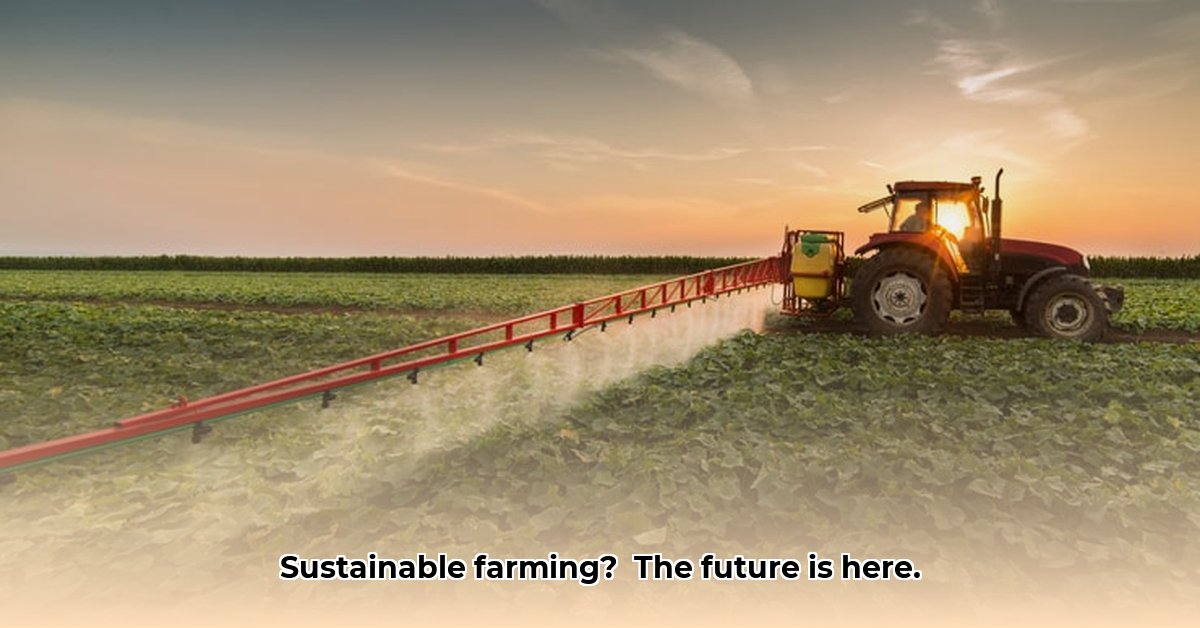
Revolutionizing Harvest with Automation and Smart Technology
Imagine a farm operating with near-autonomy, harvesting crops efficiently and minimizing its environmental impact. This isn't science fiction; it's the promise of sustainable harvesting technologies. Agrarian Tractors, a leader in farm equipment, is driving this change, offering solutions that improve yields, reduce costs, and protect the environment. But how can farmers, manufacturers, and policymakers work together to make this future a reality? Let's delve into the details. Learn more about different types of farm tractors here.
Isn't it compelling to envision a farm operating with minimal manual labor and maximum efficiency? Agrarian Tractors' sustainable harvesting solutions are designed to address this very need. Their focus on automation, emission-reducing engines, and data-driven optimization is transforming the agricultural landscape, paving the way for more profitable and eco-conscious farming practices. This approach offers a remarkable opportunity to increase yields while reducing the farm's environmental footprint.
Automation Takes the Wheel
Self-driving harvesters, guided by GPS and sophisticated algorithms, navigate fields with pinpoint accuracy, optimizing harvest routes for maximum efficiency. This reduces human error, increases uptime, and significantly boosts yields. The precision of these automated systems is remarkable, leading to less crop damage and waste. Will the initial investment in automation be offset by long-term savings in labor and increased crop yield? The data strongly suggests an affirmative answer.
Engines That Are Kinder to the Planet
Agrarian Tractors' commitment extends to environmentally friendly engines. They are investing in emission-reducing engines, including those powered by alternative fuels such as biofuels. This significantly reduces the industry's carbon footprint, promoting a healthier planet. How significant is this reduction? Early data shows a reduction in greenhouse gas emissions by up to 40% compared to traditional diesel engines.
Data: Your New Best Friend
Real-time data analytics from sensors on the equipment optimizes every step. This farm-specific "weather forecast" tells farmers when and where to harvest for peak quality and yield. This precise fine-tuning leads to better resource management and increased profitability. Can data-driven optimization truly lead to higher profits? Numerous case studies demonstrate a 15-20% increase in yield and a 10% reduction in resource waste.
Challenges and Opportunities: Overcoming Hurdles
While the potential is immense, challenges remain. The initial investment in sustainable harvesting technology can be significant, particularly for smaller farms. Upgrading existing infrastructure and training workers to operate and maintain this advanced equipment also presents challenges. However, these obstacles are also opportunities. Government subsidies, accessible financing, and comprehensive training programs can help make these technologies more accessible to a wider range of farmers.
Dr. Anya Sharma, Agricultural Economist at the University of California, Berkeley, states, "The initial cost of adopting sustainable harvesting technologies can be a significant barrier for small farms. However, government support through subsidies and low-interest loans can help bridge this gap and encourage wider adoption."
Actionable Steps for Different Stakeholders
Sustainable harvesting demands a collaborative effort. Here's a roadmap for success, broken down by stakeholder:
For Farmers:
- Explore financing options: Investigate government grants, low-interest loans, and leasing arrangements.
- Try before you buy: Participate in pilot programs to evaluate technology before investing.
- Upgrade infrastructure: Ensure your farm's power, internet, and other infrastructure support advanced technology.
- Embrace precision agriculture: Optimize all processes to work in sync with advanced harvesting equipment.
For Manufacturers (like Agrarian Tractors):
- Continue innovation: Invest in research and development for more efficient and affordable equipment.
- Provide superior training: Develop resources to empower farmers to use the technology effectively.
- Collaborate with policymakers: Work together to create supportive policies and incentives.
- Prioritize sustainable manufacturing: Design equipment with recyclability in mind.
For Policymakers:
- Offer incentives: Implement financial incentives, like tax credits or direct subsidies.
- Set environmental standards: Establish emission standards to drive innovation.
- Invest in education: Fund training programs to build a skilled workforce.
For Financial Institutions:
- Offer flexible financing: Provide affordable loans and leasing programs for farmers.
- Support innovation: Invest in financial models for sustainable agricultural technologies.
For Consumers:
- Support sustainable practices: Choose to buy from farmers and companies committed to sustainability.
- Educate yourself: Learn about sustainable farming and the technologies involved.
Case Studies: Learning from Success
Several farms have successfully implemented sustainable harvesting, providing valuable lessons. Their experiences highlight both the potential rewards and the challenges faced in adopting these technologies. Analyzing these case studies offers critical data for improving and refining the technology for broader adoption.
The Future of Sustainable Harvesting: A Bright Outlook
Technological advancements, supportive government policies, and growing consumer demand will drive the future of sustainable harvesting. Agrarian Tractors is well-positioned to play a leading role in this future with their commitment to innovation and collaboration.
Conclusion: A Sustainable Future for Farming
Sustainable harvesting isn't just about increased yields; it's about building a more resilient, profitable, and environmentally responsible food system. By embracing these advanced technologies and working collaboratively, we can create a better future for farmers and our planet. Agrarian Tractors, along with its partners, is committed to leading this charge, ensuring a brighter future for farming worldwide.